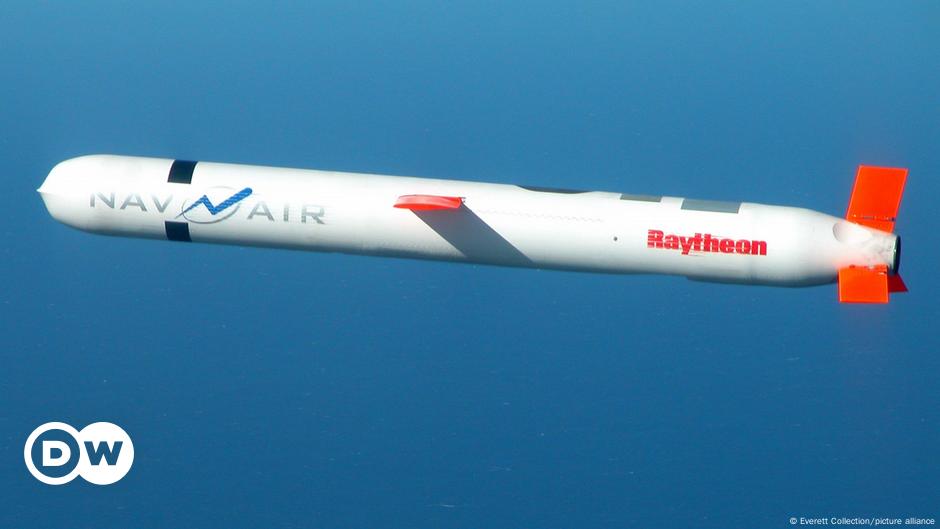The German government on Monday Russian President Putin’s weekend commentsRussia, if US Installation As planned, more medium-range nuclear-capable cruise missiles will be deployed on German territory in the coming years.
“We are not intimidated by such statements,” Foreign Ministry spokesman Sebastian Fischer told a news conference in Berlin.
Deputy government spokeswoman Christiane Hoffmann was also asked for a response.
She said she had “taken note” of Putin’s comments, but added that the proposed changes would act “solely” as a deterrent and were made necessary by Russia’s recent actions.
“Russia is shifting the strategic balance in Europe, threatening Europe and Germany with its cruise missiles, and we need to build deterrence,” she said.
What did Putin say?
Speaking at a naval parade in St. Petersburg on Sunday, Putin said Moscow would consider “similar measures” if the United States went ahead with plans to station additional weapons in Europe that could theoretically be targeted at Russia.
He recalled the arms race of the early 1980s at the end of the Cold War, when the Soviet Union’s core grievance was The deployment of Pershing missiles in West Germany at the timePutin argued that the United States was in danger of repeating a similar phenomenon.
“If the United States were to implement such plans, we would be relieved of the previously imposed unilateral moratorium on the deployment of medium- and short-range offensive weapons, including on strengthening the capabilities of the Navy’s coastal forces,” Putin said.
Putin was referring to the provisions of the 1987 Intermediate Nuclear Forces Treaty. The US and Russia withdrew in 2019.
Each side accused the other of violating the terms of the treaty.
But Putin insisted that Russia had been abiding by the terms of the nuclear deal anyway since it withdrew from it – an assessment likely to be disputed by the US and Germany – and warned that this could come to a halt if more US weapons are deployed to Germany.
Such a conflict was already forming before Russia’s full-scale invasion of Ukraine in 2022, but the tone and urgency on both sides appears to have intensified since then.
What changes are planned and is there anything new?
According to a joint statement from Washington and Berlin, the United States will begin fielding the weapons by 2026, including SM-6 missiles, improved nuclear-capable Tomahawk cruise missiles and several “hypersonic weapons under development.”
The United States and Germany claim the move is a response to: Russia deploys equivalent Iksander missiles in the exclave of Kaliningrad, which borders Poland and Lithuania..
“What we are now planning are countermeasures to prevent these weapons from being used against Germany or other targets,” Foreign Ministry spokesman Sebastian Fischer said on Monday.
Germany already has a series of U.S. military bases, a legacy of World War II and the Cold War.
Although they have a short range, several US-made missiles are officially deployed in the country.
It is also an open secret, though never officially acknowledged by either government, that the United States still maintains nuclear weapons at one of its bases in Germany, down from two in the decades before 2005.
But compared with the height of the Cold War, the number of troops stationed in Germany and other European countries is significantly lower.
msh/wmr (AFP, DPA, Reuters)


